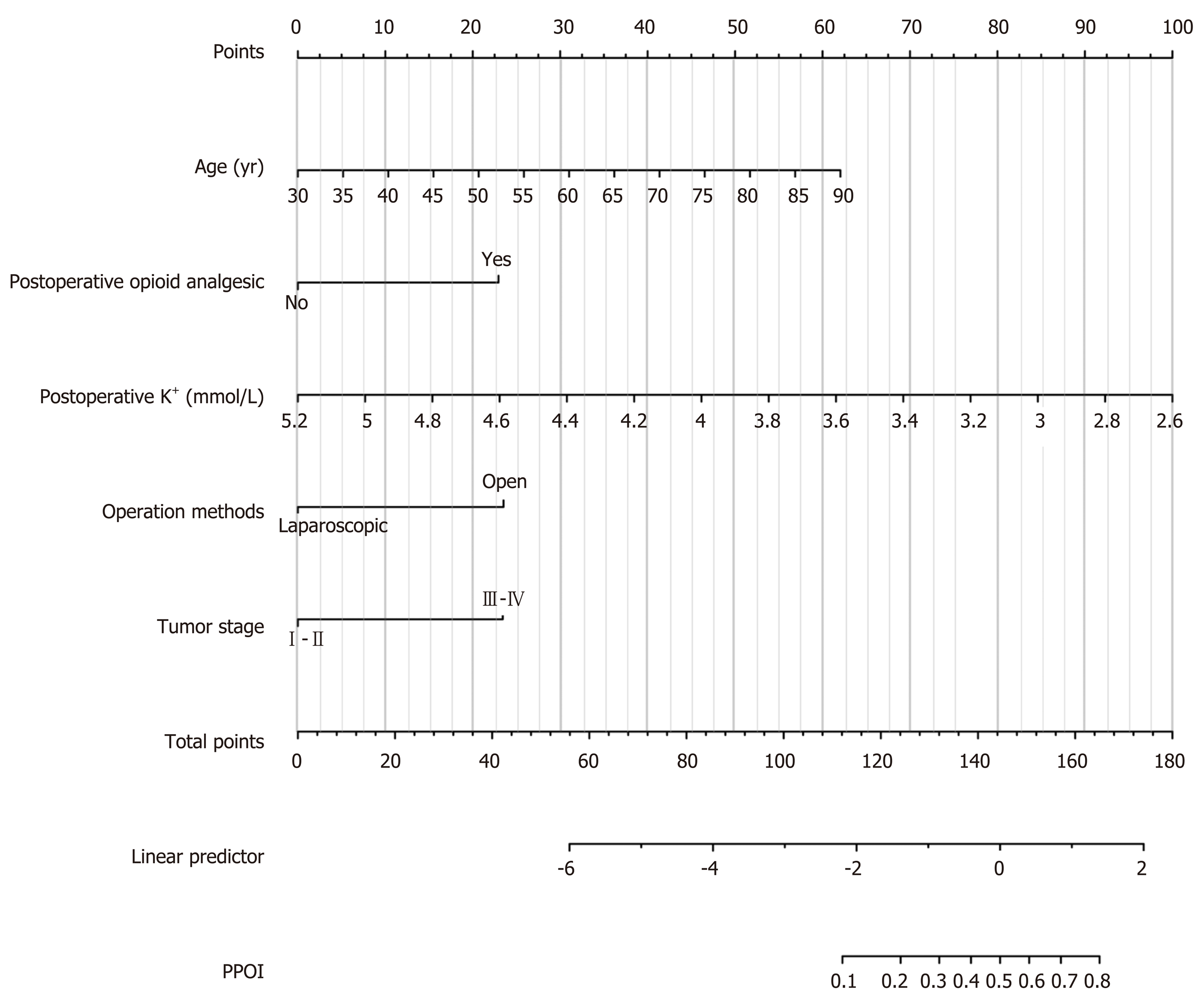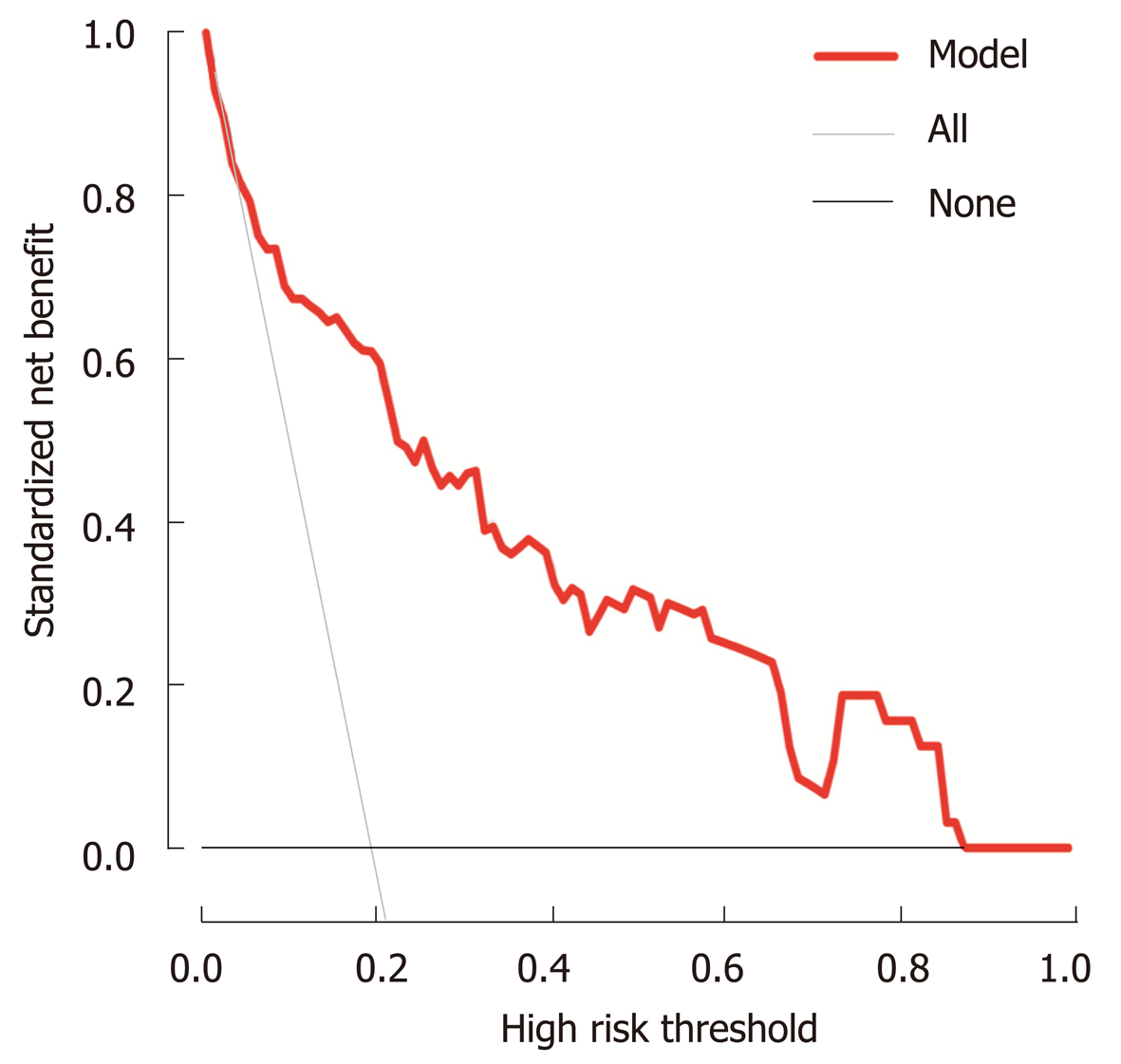Copyright
©The Author(s) 2019.
World J Gastroenterol. Oct 14, 2019; 25(38): 5838-5849
Published online Oct 14, 2019. doi: 10.3748/wjg.v25.i38.5838
Published online Oct 14, 2019. doi: 10.3748/wjg.v25.i38.5838
Figure 1 Flowchart of the process of patient enrollment.
PPOI: Prolonged postoperative ileus.
Figure 2 Nomogram prediction of prolonged postoperative ileus.
The steps are: Determine the value of the variable on the corresponding axis, draw a vertical line to the total points axis to determine the points, add the points of each variable, and draw a line from the total point axis to determine the PPOI probabilities at the lower line of the nomogram. PPOI: Prolonged postoperative ileus.
Figure 3 Receiver operating characteristic curve.
AUC: Area under the receiver operating characteristic curve.
Figure 4 Internal validation of the nomogram using the bootstrap sampling.
A: The ROC curve was measured by bootstrapping for 500 repetitions, and the AUC of the bootstrap stepwise model was showed; B: Calibration curve for predicted probability of the PPOI nomogram. The X axis is the predicted probability of the nomogram, and the Y axis is the observed probability. The red line shows the ideal calibration line, while the yellow area shows the 95% confidence interval of the prediction model. AUC: Area under the receiver operating characteristic curve; ROC: Receiver operating characteristic; PPOI: Prolonged postoperative ileus.
Figure 5 Decision curve analysis for the prediction model.
Red solid line: Prediction model. Tin slash line: Assume all patients have PPOI. Solid horizontal line: Assume no patients have PPOI. The graph indicates the expected net benefit per patient relative to the nomogram prediction of PPOI. PPOI: Prolonged postoperative ileus.
- Citation: Liang WQ, Zhang KC, Cui JX, Xi HQ, Cai AZ, Li JY, Liu YH, Liu J, Zhang W, Wang PP, Wei B, Chen L. Nomogram to predict prolonged postoperative ileus after gastrectomy in gastric cancer. World J Gastroenterol 2019; 25(38): 5838-5849
- URL: https://www.wjgnet.com/1007-9327/full/v25/i38/5838.htm
- DOI: https://dx.doi.org/10.3748/wjg.v25.i38.5838













